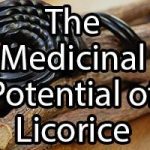
Contents
- 1 Lipodystrophy (Acquired, Generalized, Inherited)
Lipodystrophy (Acquired, Generalized, Inherited)
Lipodystrophy encompasses various types, including acquired and inherited forms. Congenital lipodystrophy develops during childhood or is present at birth. It can cause fat loss in one specific area or throughout the entire body, while generalized lipodystrophy affects fat tissue throughout the body, often leading to the mistaken perception of weight or fat gain. On the other hand, partial or localized lipodystrophy only impacts one specific area and does not generally affect overall health.
- Generalized lipodystrophy refers to the situation in which fat tissue throughout the body is affected.
- Partial or localized lipodystrophy impacts only one area of the body and does not generally affect overall health.
- Both generalized and partial lipodystrophy can be acquired or congenital.
Understanding Generalized Lipodystrophy
Generalized lipodystrophy refers to abnormalities in fat tissue within the body. It encompasses a group of rare conditions characterized by progressive loss or redistribution of fat from the tissues beneath the skin, including possible loss of fat around internal organs.
Understanding Inherited Lipodystrophy
Inherited lipodystrophy results from genetic causes.
- Congenital generalized lipodystrophy (CGL), also known as the Berardinelli-Seip syndrome, is inherited as an autosomal recessive trait.
- There are several types of familial partial lipodystrophy (FPLD), such as FPLD type 1 (Kobberling’s syndrome), FPLD type 2 (Dunnigan’s syndrome), and other rare types.
Understanding Acquired Lipodystrophy
Acquired lipodystrophy is not genetic, but rather develops as a response to other conditions. This includes the following:
- Acquired generalized lipodystrophy (AGL), also known as Lawrence syndrome.
- Acquired partial lipodystrophy (Barraquer-Simons syndrome) results in fat loss in the upper trunk and face, typically beginning in childhood or adolescence.
- Lipodystrophy induced by protease inhibitors used in HIV infection treatment, which can involve both fat loss and abnormal fat buildup.
- Localized or partial lipodystrophy, such as at an injection site, typically does not impact overall health.
Signs and Symptoms of Lipodystrophy
The primary symptom of lipodystrophy is the loss or abnormal distribution of fat, also known as lipoatophy. Inherited forms may cause noticeable abnormalities throughout the body or in specific areas. Some individuals may have thin areas on their body, while others may have larger areas with excess fat. Reduced fat may be present all over the body. Specific symptoms associated with congenital generalized lipodystrophy include:
- Voracious appetite
- Accelerated linear growth
- Increased metabolic rate
- Advanced bone age
- Protruding belly
- Prominent musculature
- Precocious sexual development
- Mental retardation
- Acanthosis nigricans (dark, velvety skin patches)
In generalized lipodystrophy, fat can accumulate abnormally in organs like the heart, kidneys, liver, and pancreas. This can give rise to complications such as insulin resistance, diabetes, high cholesterol, fatty liver disease, pancreatitis, and heart disease.
Acquired generalized lipodystrophy presents symptoms similar to inherited forms but can affect previously healthy individuals. Women tend to be more severely affected than men in all forms of lipodystrophy.
Causes of Lipodystrophy
Genetic Mutations
Congenital generalized lipodystrophy results from specific genetic mutations that are inherited. Mutations in AGPAT2 and BSCL2 genes account for most cases. Other genes such as CAV1 and PTRF have also been associated with this form of the disease.
Generalized Lipodystrophy and Leptin Deficiency
Some patients with generalized lipodystrophy have been found to be deficient in leptin, a natural chemical responsible for fat metabolism. Low leptin levels lead to metabolic abnormalities and excess fat, resulting in complications like insulin resistance, diabetes, high cholesterol, fatty liver disease, and heart disease.
Acquired Lipodystrophy Causes
Acquired lipodystrophy can develop after infections, autoimmune diseases, trauma, or repeated injections in the same area. Certain antiretroviral drugs used in HIV treatment have also been linked to lipodystrophy.
Diagnosing Lipodystrophy
A medical diagnosis of lipodystrophy involves examining changes in fat loss or gain and identifying characteristic symptoms and signs. Blood tests to measure leptin levels and screen for other metabolic problems are essential diagnostic tools, although not all lipodystrophy patients have low leptin levels. Genetic testing may also be performed to identify inherited forms of the disorder.
Treatment and Management of Different Types of Lipodystrophy
- Generalized Lipodystrophy: The FDA has approved metreleptin for injection (Myalept) as replacement therapy for leptin deficiency complications. It is used alongside dietary changes for congenital generalized or acquired generalized lipodystrophy. Metreleptin is administered via injection and is a recombinant human leptin analog. It is important to note that T-cell lymphoma has occurred in patients with acquired lipodystrophy and pre-existing immunodeficiency who have undergone metreleptin treatment. Common side effects of metreleptin can include fatigue, hypoglycemia, headache, decreased weight, and abdominal pain.
Overall, lipodystrophy syndromes are rare. Generalized lipodystrophy affects less than 1 in every 1 million people, while acquired partial lipodystrophy has been reported in approximately 250 cases. The prevalence of HIV-associated lipodystrophy is difficult to estimate accurately, but it has been observed in a significant percentage of HIV-infected patients.
Prognosis and lifespan for individuals with lipodystrophy vary depending on the type and severity of the disorder, as well as the presence of associated health conditions such as diabetes or HIV. Treatment of these conditions also affects prognosis.
Sources:
Aytug, S. MD. "Localized Lipodystrophy Workup." Medscape. Updated: Dec 16, 2014.
Handelsman et al. "The clinical approach to the detection of lipodystrophy- an AACE consensus statement." Endocr Pract. 2013 Jan-Feb; 19(1): 107–116.
Handelsman et al. "The clinical approach to the detection of lipodystrophy- an AACE consensus statement." Endocr Pract. 2013 Jan-Feb; 19(1): 107–116.


